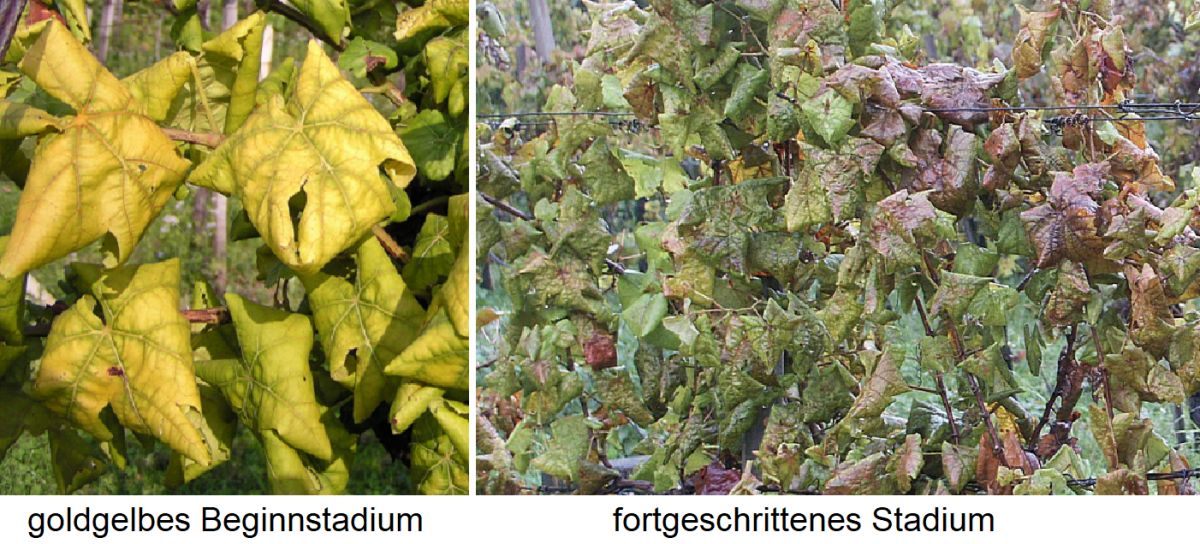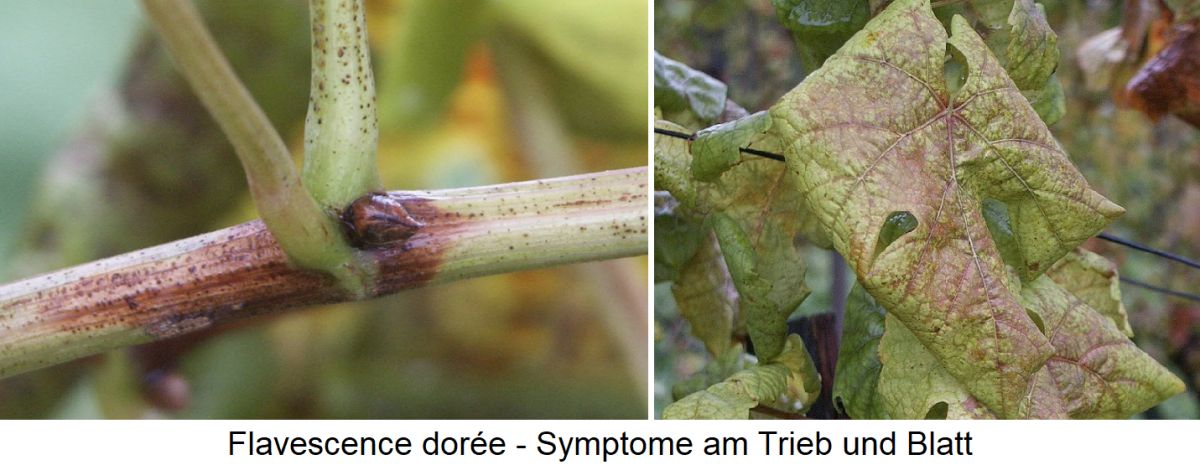Also known as "grapevine flavescence dorée phytoplasma", this relatively new vine disease was probably introduced to Europe in the 1940s from eastern North America in the Great Lakes region. It first appeared here on a massive scale in the early 1950s in France-Armagnac and then spread epidemically across southern France, Italy and Spain. Corsica was hit particularly hard because grape varieties particularly susceptible to the disease are cultivated here. It seems to be favoured in warmer regions, and the strong spread may also be due to climate change. Individual observations with similar symptoms have also been made in Germany.

Causative agent
The disease is caused by phytoplasmas (bacteria-like microorganisms), which are also the causative agents of Dutch elm yellows. The pathogens are presumably transmitted by at least two species of cicada (American vine cicada and Oriental cicada). The larvae usually remain on the same vine and stay on the undersides of the leaves. The adult cicadas, on the other hand, are very mobile and can cause the disease to spread rapidly over long distances. The grape varieties Alicante Henri Bouschet, Aramon Noir, Baco Blanc, Chardonnay, Riesling and Sangiovese appear to be particularly susceptible. The pictures show the advanced stage of the disease in the Scheurebe grape variety (seedling 88).

Symptoms
The first signs appear on the leaves in early summer. These curl downwards, becoming bright golden yellow in white varieties (hence the name "golden yellow yellowing") and red in red varieties. The shoots coulure very strongly and can dry out completely. Black pustules and sometimes longitudinal cracks form on the internodes (parts between the nodes of a shoot) (see picture above). The shoots hang limply as if they were withering. In autumn, necroses form on the main leaf veins. If the infestation occurs during early growth, the grapes may also fall off. At the very least, however, the berries shrivel and take on a bitter flavour. Sensitive vine varieties can die completely just one year after an infestation. Pathogens and cicada eggs are spread by planting material.
Control
The cicadas are controlled with insecticides. In mid-2021, a laboratory in Bordeaux published the results of initial trials with anti-Covid 19 vaccines. The disease-transmitting vine cicadas were injected with an RNA interference that prevents the synthesis of a specific protein. This suppresses the ability of the vine cicada to transmit the disease for up to twelve days. The vine species Vitis rotundifolia (2 x 20 = 40) is resistant to this disease. However, it has a different set of chromosomes than the species Vitis vinifera (2 x 19 = 38), which is why crossbreeding with reproductive offspring is very difficult. However, such crosses have now been successful. A similar disease is Pierce's disease.
golden yellow leaves: © H. Reisenzein - AGES Vienna
withered leaves: By Josef Klement, CC BY 2.0 at, Link
Shoot symptoms: By Josef Klement CC BY 2.0 at, Link
Leaf symptoms: By Josef Klement CC BY 2 .0 at, Link
Voices of our members

For me, Lexicon from wein.plus is the most comprehensive and best source of information about wine currently available.
Egon Mark
Diplom-Sommelier, Weinakademiker und Weinberater, Volders (Österreich)